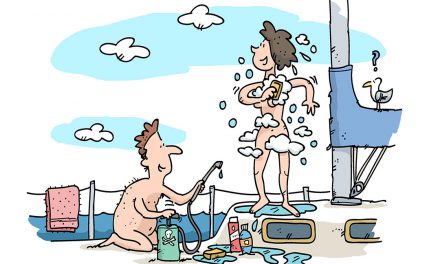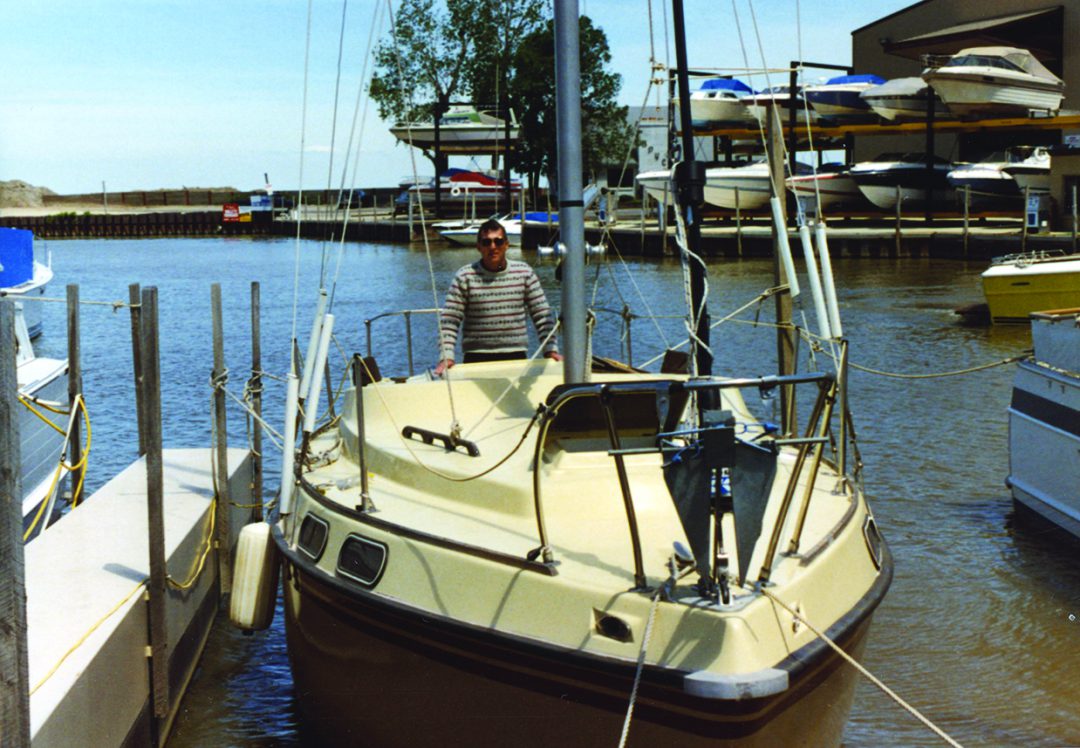Issue 137: March/April 2021
Something’s been troubling me for a few months.
Late last year, US Sailing, the governing body of sailing that’s been around for over 120 years, held several online forums that were the first part of its Diversity, Equity, and Inclusion Series. This ongoing initiative is true to US Sailing’s goal to cast a wider net, bring a larger group of people into the sailing community, and to increase the number of sailors.
This is a good goal. Sailing needs more sailors. And the most obvious and easiest way to encourage more sailors is to make sailing more attractive to groups of people who are not already widely seen on the water. There are a lot of people already sailing who look like me (white, male, heterosexual), so we’re talking about people who don’t look like me.
We at Good Old Boat see this US Sailing effort as a huge positive. On our social media platforms, we helped get the word out, with the aim of increasing awareness of and participation in the US Sailing forums. Our announcements and reminders of these events were among the most commented posts on our Facebook page last year. Many of the comments that readers left were positive and supportive of US Sailing’s efforts. But too many rubbed me the wrong way, to say the least.
“What a shame people are trying to politicize sailing.”
I get it; Diversity, equity, and inclusion may be strictly political terms for you. But it’s not political; it’s reality. The sailing population is, unfortunately, nearly homogeneous and doesn’t come close to reflecting the general U.S. population. Does that make any sense? Bringing in more sailors means bringing in more sailors who don’t look like the majority of us who are already sailing. That’s called diversity, equity, and inclusion. It ain’t political, it’s just opening the doors of a sport we love to more people.
“Ridiculous. I know of no one that isn’t permitted to sail, we already have inclusion. We waste time and resources chasing fake problems.”
You’re right, nobody is prohibited from sailing based on what they look like, where they are from, what their skin color is, or how they identify themselves in terms of gender, sexuality, or any other personal characteristic. That would be illegal. And that’s the reason there are diverse people already out sailing with you and me. But they’re profoundly underrepresented in the sport, and that’s a real problem—not a “fake problem”—for sailing. And, just pointing to the fact that there are no laws excluding anyone from sailing doesn’t address the problem. If it did, the problem wouldn’t exist.
Karen Harris, past commodore of the Jackson Park Yacht Club (JPYC) of Chicago, and a panelist in one of these forums, explained why: “A bunch of Black people are not just going to say to themselves, ‘Huh, I wonder what’s going on at the yacht club today,’ when they’ve never had any experience sailing…no more so than a bunch of non-diverse people are going to say, ‘I wonder what’s going on at that Black church on Saturday morning, I think we’ll just show up.’ And if you think that’s just going to happen, nothing’s going to happen.”
Yep.
Accordingly, US Sailing is seeking “to promote access to the sport of sailing and increase participation by encouraging local sailing organizations to provide an inviting, inclusive environment in which to sail… Part of US Sailing’s vision is to introduce as many people as possible to this great sport.”
Who could possibly argue with that?
The only question anyone should pose is: What can I do?
First, recognize that increasing diversity, equity, and inclusion in sailing is good for sailing, and it’s the fastest path to growing sailing. Invite people in your life who are not part of your sailing circle into your sailing circle. Take them out for a sail—make it a goal to do that at least once per season. Share your knowledge of how accessible sailing can be, countering the prevailing perception that it’s not.
Too far outside your comfort zone? That’s okay. There are many sailing programs around the country working to expand opportunities to kids from at-risk neighborhoods, wounded veterans, the disabled, people of color, and others who don’t have ready access to boats and the water or know how to sail. Find one near you and ask what you, as a sailor, can do to help.
Understand the policies and attitudes that stymie sailing growth. Many yacht clubs are excellent at outreach, bringing outsiders in and providing their first sailing experience. But many other clubs of like-minded, like-heeled, like-employed, like-looking members require new members to be sponsored by multiple existing members, an intrinsic barrier to growth beyond the existing social circle.
“When you are done pursuing dogma, I’ll renew my US Sailing membership.”
Nope. It’s not dogma. It’s not politics. It’s not anything but doing the necessary thing: increasing the number of sailors in the U.S.—and going about it the smart way and the right way, by making our community of sailing more open and accessible to every single person.
Thank you to Sailrite Enterprises, Inc., for providing free access to back issues of Good Old Boat through intellectual property rights. Sailrite.com





